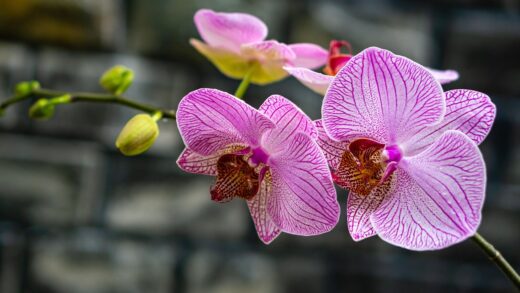‘The Fairy’ rose, a polyantha variety, is renowned for its remarkable resilience, charming appearance, and generous blooming period, making it a beloved choice for gardeners seeking both beauty and durability. Its ability to thrive in a variety of conditions, coupled with its relatively low maintenance requirements, solidifies its status as a staple in landscape design. This variety produces abundant clusters of small, delicate pink blossoms that gracefully adorn its arching stems from early summer until the first frosts of autumn. Understanding the fundamental aspects of its care is the first step towards cultivating a vibrant and healthy plant that will reward you with a profusion of flowers year after year.
Properly caring for this ground cover rose begins with an appreciation for its growth habit and inherent strengths. As a spreading shrub, it naturally suppresses weeds and creates a lush carpet of foliage and blooms, which is ideal for covering slopes, borders, or large open areas. The plant’s dense growth not only contributes to its aesthetic appeal but also serves a practical purpose in the garden ecosystem. To ensure its success, one must focus on providing the right environment, which includes adequate sunlight, appropriate soil, and consistent moisture, especially during its formative years. The inherent disease resistance of ‘The Fairy’ is a significant advantage, but this does not mean it is entirely immune to problems, making preventative care a key component of its long-term management and vitality.
Cultivating a thriving ‘The Fairy’ rose involves a holistic approach, where each element of care is interconnected. From the initial planting to seasonal maintenance, every action contributes to the overall health and flowering potential of the shrub. While it is known for being forgiving, paying close attention to its needs will result in a more spectacular and prolonged floral display. This includes regular feeding to support its continuous blooming, timely pruning to maintain its shape and encourage new growth, and vigilant monitoring for any signs of stress or disease. By establishing a routine of attentive care, you can ensure that this enchanting rose remains a centerpiece of your garden’s design for many seasons.
The enduring popularity of this variety is a testament to its reliability and versatile nature in the landscape. It performs exceptionally well when mass-planted, creating a breathtaking sea of pink, but it is equally charming as a standalone specimen or when grown in containers. Its cascading habit also makes it an excellent choice for spilling over retaining walls or the edges of raised beds, adding a soft, romantic touch to hardscape elements. Ultimately, the successful cultivation of ‘The-Fairy’ is a rewarding experience, as it offers a continuous and delightful display of colour and texture with a reasonable amount of effort, making it an ideal plant for both novice and experienced gardeners alike.
Siting and soil preparation
Choosing the optimal location is the most critical first step in ensuring the long-term health and prolific blooming of your ‘The Fairy’ rose. This variety flourishes in conditions that provide full sun, which translates to a minimum of six hours of direct sunlight each day. While it can tolerate partial shade, a reduction in light exposure will invariably lead to fewer flowers and potentially weaker, more elongated growth as the plant stretches towards the light. An open area with good air circulation is also highly beneficial, as this helps the foliage to dry quickly after rain or watering, significantly reducing the risk of fungal diseases such as black spot and powdery mildew, to which many roses are susceptible.
More articles on this topic
Once you have selected the perfect sunny spot, preparing the soil is paramount. ‘The Fairy’ rose, like most roses, prefers a rich, fertile, and well-draining growing medium. Before planting, it is advisable to amend the native soil with generous amounts of organic matter, such as well-rotted compost, leaf mould, or aged manure. This not only enriches the soil with essential nutrients but also dramatically improves its structure. For heavy clay soils, the addition of organic matter enhances drainage and aeration, preventing waterlogged roots, while in sandy soils, it helps to retain moisture and nutrients that would otherwise leach away too quickly.
The ideal soil pH for roses is slightly acidic, typically ranging from 6.0 to 6.5. It is a worthwhile investment to test your soil’s pH level before planting to determine if any adjustments are necessary. If your soil is too alkaline, you can lower the pH by incorporating elemental sulfur or organic materials like peat moss. Conversely, if the soil is overly acidic, ground limestone can be added to raise the pH to the optimal range for nutrient uptake. Achieving the correct pH ensures that the rose can efficiently absorb the nutrients available in the soil, which is crucial for vigorous growth and abundant flowering throughout the season.
Finally, proper soil preparation involves digging a planting hole that is both wide and deep enough to comfortably accommodate the rose’s root system without bending or cramping it. A general guideline is to make the hole at least twice as wide as the root ball and just as deep. Loosening the soil at the bottom and sides of the hole encourages the roots to spread outwards into the surrounding earth, establishing a strong and extensive root system. This robust foundation is essential for the plant’s stability, drought tolerance, and overall ability to thrive in its new environment.
Watering and moisture management
Consistent and proper watering is fundamental to establishing a healthy ‘The Fairy’ rose and maintaining its vigour, especially during its first growing season. Newly planted roses require regular moisture to help their roots establish themselves in the new soil. During this initial period, it is crucial to water deeply once or twice a week, depending on weather conditions, ensuring the water penetrates the soil to a depth of at least 12 to 18 inches. This deep watering encourages the development of a strong, deep root system, which will make the plant more resilient and drought-tolerant in the future, as opposed to shallow, frequent watering that promotes a weak, superficial root structure.
More articles on this topic
Once the rose is well-established, its watering needs will become less demanding, though it is not completely drought-proof. During prolonged periods of heat and dryness, supplemental watering will be necessary to prevent stress, which can manifest as wilting, yellowing leaves, and a reduction in flower production. A reliable method to determine when to water is to check the soil moisture; insert your finger a few inches into the soil near the base of the plant. If the soil feels dry at that depth, it is time to provide a thorough soaking. Using soaker hoses or a drip irrigation system is highly effective as it delivers water directly to the root zone, minimizing evaporation and keeping the foliage dry.
When irrigating your ‘The Fairy’ rose, the time of day and the method of application are important considerations for disease prevention. It is best to water early in the morning, which allows any moisture that splashes onto the leaves ample time to evaporate in the sun throughout the day. Wet foliage, especially overnight, creates the perfect breeding ground for fungal diseases like black spot and powdery mildew. Therefore, it is essential to avoid overhead watering with sprinklers whenever possible. Directing the water stream at the base of the plant ensures that the roots receive the moisture they need without unnecessarily wetting the leaves and flowers.
Mulching is an indispensable practice in effective moisture management for ‘The Fairy’ rose. Applying a two- to three-inch layer of organic mulch, such as wood chips, shredded bark, or compost, around the base of the plant offers numerous benefits. Mulch helps to conserve soil moisture by reducing evaporation, suppresses weed growth that competes for water and nutrients, and moderates soil temperature, keeping the roots cooler in the summer and insulated in the winter. As the organic mulch breaks down over time, it also gradually enriches the soil, further contributing to the overall health of the rose.
Fertilization and nutrition
To support its long and prolific blooming season, ‘The Fairy’ rose requires a steady supply of nutrients. A consistent fertilization schedule is key to ensuring the plant has the energy to produce its characteristic profusion of blossoms from summer through to autumn. The best practice is to begin feeding in early spring, just as new growth starts to emerge. A high-quality, balanced rose fertilizer or a general-purpose granular fertilizer with an N-P-K ratio like 10-10-10 is an excellent choice for this initial application. This provides a solid foundation of essential nutrients to kickstart the growing season.
Following the initial spring feeding, it is beneficial to continue applying fertilizer throughout the growing season at regular intervals, typically every four to six weeks. You can choose to continue with a granular fertilizer, scratching it lightly into the soil surface around the plant’s drip line and watering it in well, or you can switch to a water-soluble fertilizer applied during regular watering. Both methods are effective at delivering the necessary nutrients. However, it is crucial to cease all fertilization approximately six to eight weeks before the first expected frost date in your region. Late-season feeding can encourage tender new growth that is highly susceptible to damage from cold weather.
In addition to balanced chemical fertilizers, ‘The Fairy’ rose greatly benefits from the incorporation of organic matter. Top-dressing the soil around the base of the plant with a layer of compost or well-rotted manure in the spring provides a slow-release source of nutrients and improves soil structure. Organic amendments also foster a healthy soil microbiome, which is essential for nutrient cycling and root health. Materials like bone meal can be added to supply phosphorus for strong root development, while alfalfa meal can provide a natural source of nitrogen and other growth stimulants.
Observing your rose’s foliage can provide valuable clues about its nutritional status. Healthy leaves should have a deep, rich green colour. If you notice the leaves becoming pale or yellowed (a condition known as chlorosis), it could indicate a nutrient deficiency, often of iron or nitrogen. In such cases, a soil test can help pinpoint the exact deficiency, allowing for a more targeted treatment. Applying a liquid feed containing chelated iron or a foliar spray with micronutrients can often quickly correct these issues and restore the plant to its full, vibrant health.
Pruning and maintenance
Pruning is an essential aspect of caring for ‘The Fairy’ rose, although its requirements are less intensive than those of many other rose types. The primary goal of pruning this variety is to maintain its shape, remove any unhealthy wood, and encourage vigorous new growth and flowering. The best time to perform the main pruning is in late winter or early spring, just before the new leaf buds begin to swell. This timing allows you to easily see the plant’s structure and removes the risk of frost damage to fresh cuts. A light shaping is often all that is needed to keep its naturally graceful, arching form.
When pruning, always start by removing any wood that is dead, damaged, or diseased, cutting it back to healthy, white-pith tissue. This sanitation practice is crucial for preventing the spread of diseases. Next, look for any canes that are crossing or rubbing against each other, as this can create wounds that serve as entry points for pathogens. Remove the weaker or less well-placed of the two crossing canes. The overall aim is to open up the center of the shrub slightly to improve air circulation, which is a key strategy in preventing fungal infections.
Beyond the annual spring pruning, ongoing maintenance throughout the blooming season can enhance the plant’s appearance and performance. This primarily involves deadheading, which is the practice of removing spent flowers. For ‘The Fairy’ rose, which blooms in large clusters, you can wait until most of the flowers in a single spray have faded and then snip off the entire cluster just above the first five-leaflet leaf. While this rose will rebloom even without deadheading, the practice tidies the plant’s appearance and redirects its energy into producing new flowers rather than developing seeds (rose hips).
Over time, your ‘The Fairy’ rose may become overly dense or start to lose vigour in the center. To rejuvenate an older, established plant, you can perform a renewal pruning in early spring. This involves selectively removing one or two of the oldest, thickest canes at their base. This encourages the plant to produce new, vigorous canes from the crown, effectively renewing the shrub’s structure over a period of a few years. This method maintains the plant’s health and ensures a continuous, robust display of flowers for many years to come.
Pest and disease management
While ‘The Fairy’ rose is celebrated for its excellent disease resistance, it is not entirely immune to common rose ailments. The most frequently encountered fungal issues are black spot and powdery mildew, particularly in humid conditions or in gardens with poor air circulation. Black spot appears as dark, circular lesions with fringed edges on the leaves, which eventually cause the leaves to turn yellow and drop prematurely. Powdery mildew presents as a white, dusty coating on leaves, stems, and buds. The best defense against these diseases is prevention: ensure proper spacing for good airflow, water at the base of the plant in the morning, and promptly clean up and dispose of any fallen leaves.
Should a fungal disease take hold, several treatment options are available. For minor infections, simply removing and destroying the affected leaves can sometimes be enough to halt the spread. If the problem persists, horticultural oils, such as neem oil, or fungicidal sprays specifically formulated for roses can be effective. It is important to follow the product’s application instructions carefully and to ensure thorough coverage of all plant surfaces, including the undersides of leaves. Consistent application, often every 7 to 14 days, may be necessary during periods of high disease pressure to keep the infection under control.
In terms of insect pests, aphids are among the most common culprits to trouble ‘The Fairy’ rose. These small, soft-bodied insects typically congregate on new growth and flower buds, sucking sap and causing distorted growth. A strong jet of water from a hose can often be sufficient to dislodge small populations. For more significant infestations, insecticidal soap or horticultural oil sprays are effective and are a less toxic alternative to synthetic pesticides. Introducing or encouraging beneficial insects, such as ladybugs and lacewings, which are natural predators of aphids, is also an excellent long-term, environmentally friendly control strategy.
Another pest to watch for is the spider mite, especially during hot, dry weather. These tiny arachnids are difficult to see with the naked eye but their presence is often indicated by a fine webbing on the undersides of leaves and a stippled, faded appearance of the foliage. Like with aphids, a strong spray of water can help manage spider mite populations by knocking them off the plant and increasing humidity, which they dislike. If necessary, miticides or horticultural oils can be used for control. Regular inspection of your roses is the key to catching any pest or disease issue early, making it much easier to manage before it becomes a major problem.




















